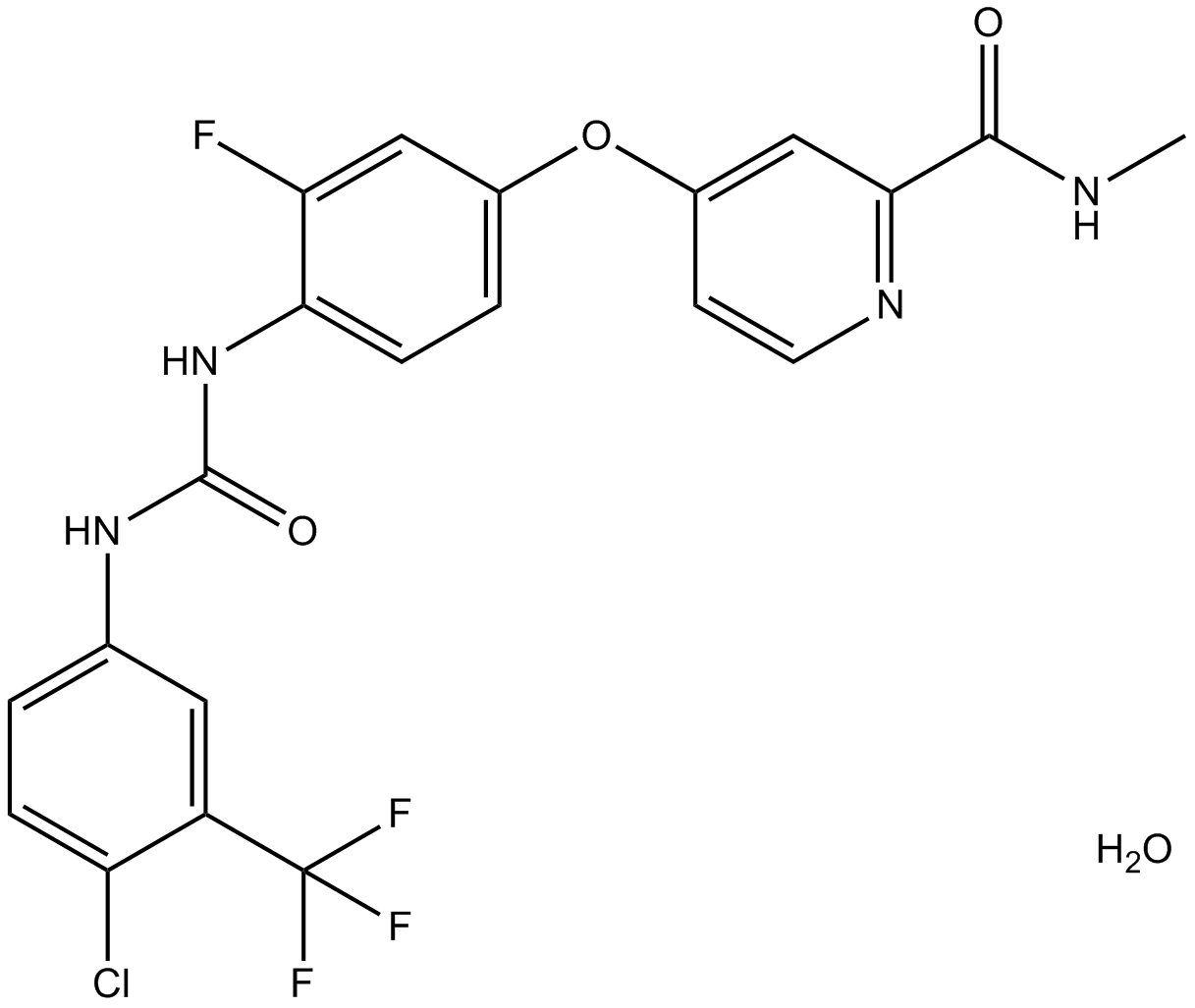Regorafenib monohydrate |
| Catalog No.GC14534 |
A multi-kinase inhibitor
Products are for research use only. Not for human use. We do not sell to patients.

Cas No.: 1019206-88-2
Sample solution is provided at 25 µL, 10mM.
Regorafenib monohydrate is a multitargetedinhibitor of tyrosine kinase with IC50 values of 13nM, 4.2nM, 46nM, 2.5nM, 28nM, 19nM, 202nM, 22nM, 7nM, 1.5nM and 311nM, respectively for VEGFR-1, mVEGFR-2, mVEGFR-3, Raf-1, BRAF WT, BRAFV600E, FGFR-1, PDGFR-β, c-KIT, RETand TIE2 [1].
Regorafenib is a multikinase inhibitor of both intracellular and membrane-bound RTKs. It shows potent inhibition of angiogenic and stromal RTKs like VEGF receptors-1-3, PDGFR-β and FGF receptor-1 with IC50 values ranging from4.2 to 311nM in biochemical assays. It also inhibits oncogenic RTKs, such as RET and c-KIT, with IC50 values ranging from 1.5 to 28nM in cellular assays [1].
Regorafenib is reported to have anti-tumor efficacy to various tumors including breast, pancreas, thyroid, melanoma, GIST, and CRC with a mean IC50 value less than 1μM. These inhibition effects of tumor growth are also found in mouse xenograft models after the treatment of regorafenib at dose ranging from 10 to 100 mg/kg [1].
References:
[1] Crona DJ, Keisler MD, Walko CM.Regorafenib: a novel multitargeted tyrosine kinase inhibitor for colorectal cancer and gastrointestinal stromal tumors.Ann Pharmacother. 2013 Dec;47(12):1685-96.
Average Rating: 5 (Based on Reviews and 30 reference(s) in Google Scholar.)
GLPBIO products are for RESEARCH USE ONLY. Please make sure your review or question is research based.
Required fields are marked with *




















